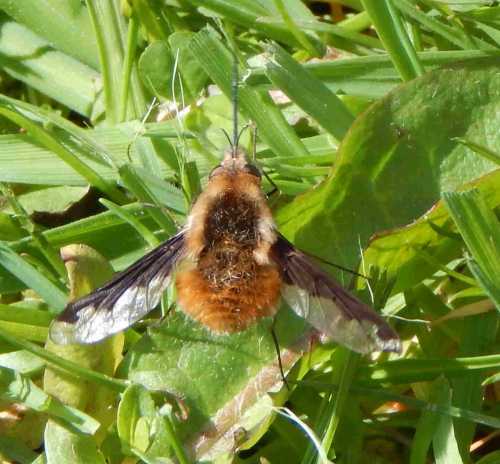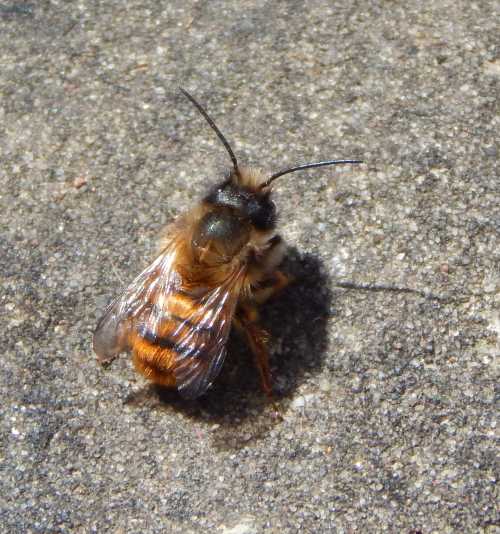Red-tailed Mason Bee - Osmia Bicolor
Date: 21st April 2021
The red-tailed mason bee - Osmia Bicolor, is a fascinating species that makes its nest in empty snail shells. It may be seen from March onwards through to July.
Females are distinctive in appearance, with their black heads and thorax, whilst the abdomen is a deep crimson red. Males could easily be confused with other species, as they are brown haired and not so unique in appearance. Females measure approximately 6.5 - 8mm in length, males are slightly smaller.
Red-tailed Mason Bee - Osmia Bicolor - Nesting habits
Firstly, the female finds a suitable empty snail shell and inspects it. As she does so, she typically turns the shell.
Females may create only one nest cell in each individual snail shell, but there may be more - up to four or five. The number of nest cells will depend upon the size of the snail shell used. The female uses particles of chewed leaf for partitioning the cells (in contrast with leafcutters, which use whole segments of leaf). She also uses particles of earth, possibly snail shell and chalk.
Once finished, the female then covers the snail shell with pieces of dried grass that she gathers and carries back to the snail shell - (some of them quite long in proportion to her own little body!), bits of dead leaf and other leaf debris, to camouflage it.
Below you can watch this amazing little bee in action in the videos below.
Males are known to shelter in empty snail shells in inclement weather.
Habitat and flowers visited
Red-tailed mason bee visit a range of flowers and flowering shrubs, such as bird's foot trefoil, wood anemone, kidney vetch, dandelion, daisy, violets, dead nettle, bluebell, bugle, ground ivy are among the flowers visited by this species.
Shrubs visited include: hawthorne, sallows, blackthorne and gorse.
They favour chalk and limestone landscapes and soils, including quarries and brownfield sites.
Known parasites and predators
Spider beetle, Ptinus sexpunctatus attacks nests.

